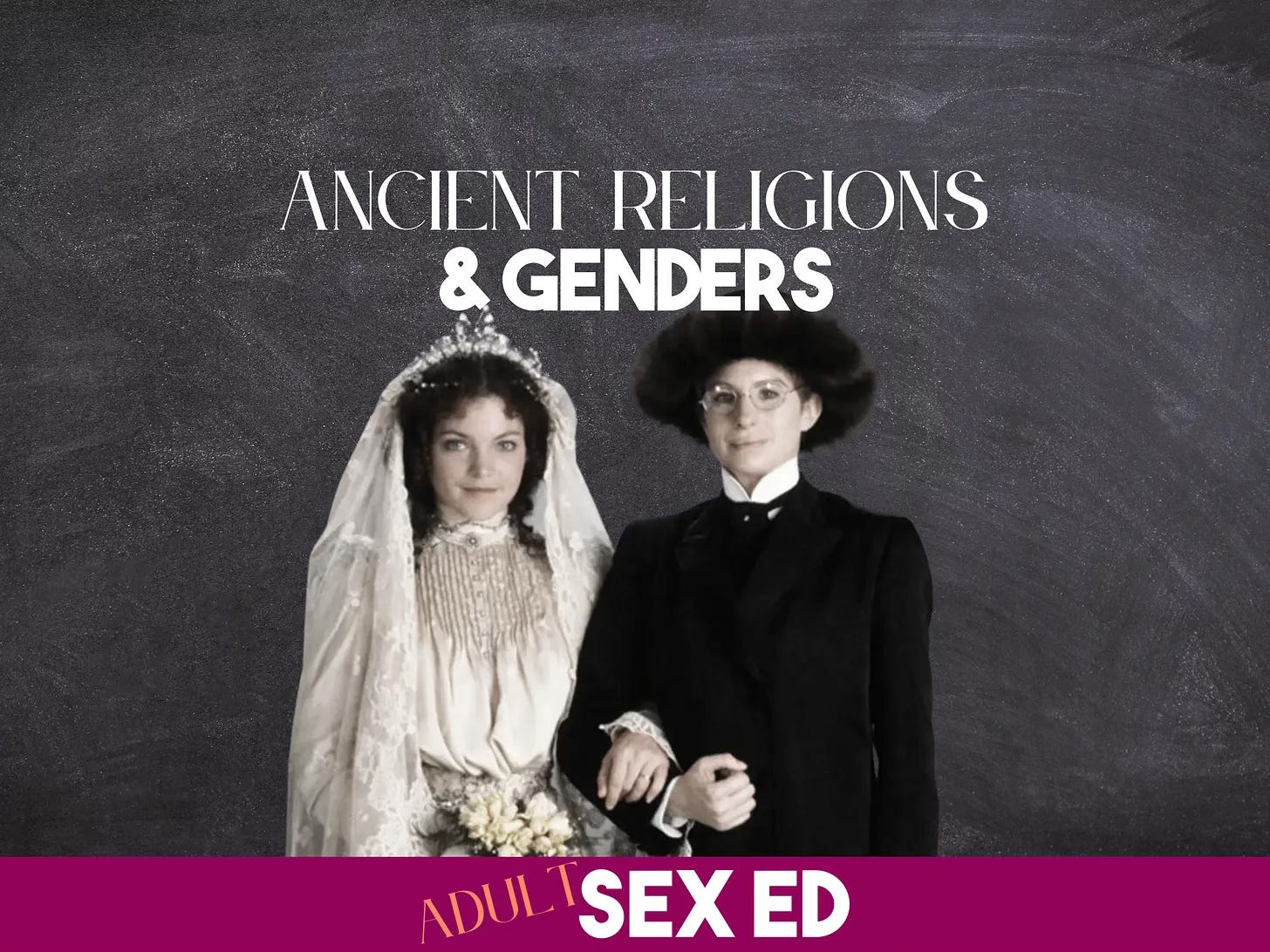Hi horny readers! Thank you so, so much for reading the ADULT SEX ED newsletter. This is the 100th edition! More on that below.
New here? Adult Sex Ed comedically challenges why we think what we think about sex. I’m Dani Faith Leonard, a filmmaker, comedy writer, and performer. In 2018, I started a comedy show called Adult Sex Ed and launched this newsletter in 2023. Each week, I take a fun deep dive into a topic that I’ve been researching. Ready to plug the holes in your education? Okay, let’s go!
This is the 100th Adult Sex Ed newsletter! The milestone snuck up on me. Just recently, I posted compilation of some of my favorite posts to prepare us for 2025. Two weeks ago, I posted about my mandate for this year. I don’t think it’s necessary for another recap, but I’ll mention something I’m struggling with: it’s hard to write funny, evergreen posts when it feels like the more responsible thing to do is to comment on what’s happening right now. What I’m hoping I can achieve is a balance—funny explorations of the topics that people don’t usually talk about in order to explain what’s going on in the world today. As always, when I’m working through a historical lens, I’m going to focus on the facts.
Last night, President Trump made his first address to a joint session of Congress. He jumped from topic to topic, even bringing up transgender mice, which gave me a great idea for a sequel to An American Tail.
He further clarified the point he was trying to make with a full defensive page on the White House website confirming that “YES, BIDEN SPENT MILLIONS ON TRANSGENDER ANIMAL EXPERIMENTS.” The figure that was cited was $8 million and it was stated that DOGE made the discovery. To be clear, I haven’t seen any trans mice and I live in New York City. The truth is, from 2021-2022, the NIH allocated $477,121 to three projects focused on administering feminizing hormone therapy to monkeys to study its potential impact on their immune system, and its role in increasing susceptibility to HIV.
That wasn’t the only mention of trans people: there was the usual fear mongering about trans people in sports, as if every trans person out there is dying to play Division 1 volleyball. Trump also bragged about signing an executive order that recognizes only “two genders, male and female.”
There are two things that are interesting to me about this, and I think they’re valuable points to consider no matter where you sit on the political spectrum:
Sex and gender aren’t the same thing: Sex refers to the biological and physiological characteristics that define a person as male, female, or intersex (so even in this case, there are more than two options). This is determined by your reproductive organs, hormones, and other biological factors. Gender is a social and cultural construct that encompasses a person's identity, how they express themselves, and how they conform to social norms like dress, appearance, and behavior. So, sex is biological and gender is social.
This is important: the presence of trans and non-binary people in society isn’t new. How would people think differently if it was widely understood that trans people have been recognized since early civilizations?
Here’s one of the first posts that I ever wrote, which is appropriate given this is the 100th newsletter.
Throughout world history, many cultures have recognized gender identities other than male and female. Nonbinary people have often occupied special positions in these societies, serving as priests and leaders.
Perhaps you’ve heard about the rejection of the gender binary in indigenous cultures. “Two-spirit” is a well known term (actually created in 1990, so it’s not as historic as it may seem) that refers to a person who identifies as having both a masculine and a feminine spirit, and is used by some North American Indigenous people to describe their sexual and/or gender identity. Recently, on Eva Logoria’s CNN show, Searching for Mexico, she visited Oaxaca and a group that has defied the gender binary for generations. Muxes, a group long recognized within the indigenous Zapotec people of Mexico, are often referred to as a third gender.
But what if I told you that ancient religions, including the precursors of the religions practiced around the world today include multiple genders?
Ancient Judaism actually recognized eight genders. This information can be found in the Talmud, an Ancient Jewish text which is traditionally only studied by men. If you remember the plot of Yentl, this is what sets everything into motion.
According to the ancient text, the genders assigned at birth are zachar = male; nekevah= female; tumtum = lacking sexual characteristics; androgynos = having both male and female characteristics. The genders that can be assigned later in life are aylonit hamah = identified female at birth but later naturally developing male characteristics; aylonit adam, identified female at birth but later developing male characteristics through human intervention. Saris hamah and saris adam follow the same structure for those identified male at birth. There isn’t necessarily an exact equivalence between these ancient categories and modern gender identities.
This conversation, like so many others involving gender, has stirred up controversy. In March, Rabbi Elliot Kukla wrote a New York Times op-ed titled “Ancient Judaism Recognized a Range of Genders. It’s Time We Did, Too.” The rabbi cited trans and nonbinary young people’s deaths by suicide and encouraged people to learn about the genders beyond male or female that appear in ancient Jewish holy texts hundreds of times. Modern day Judaism is very gendered and the backlash, especially from Orthodox rabbis, was severe.
It’s easier to convince people that something new is scary. Or that these new people showing up are going to “replace you.” A spectrum of gender identities isn’t new at all. L’chaim!
**Almost two years later, I have notes. You should know that I’m very aware that Yentl isn’t a great representation of the trans or non-binary experience and I was using the image as a joke. However, if I get hate mail, I’m responding with clips from Yentl.
Make sure you’re subscribed so you never miss a post!
If you enjoyed this newsletter, please share with friends, so they can be hilariously informed.
Don’t miss these recent newsletters:








This was great❤️